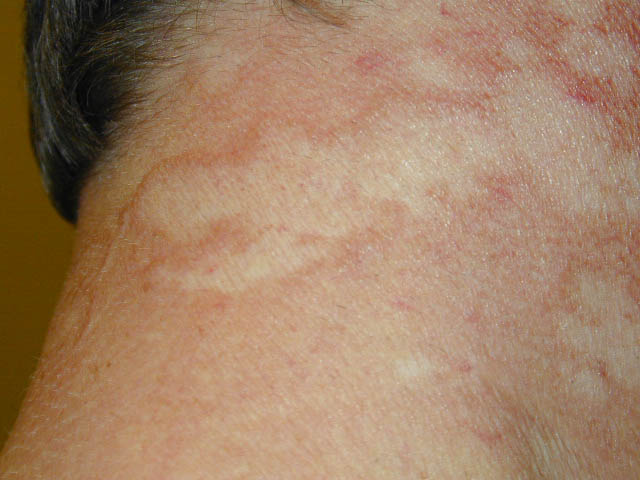ACTINIC GRANULOMA

What is an actinic granuloma?
An actinic granuloma, also called annular elastolytic giant-cell granuloma, is characterized by annular (ring-like) plaques that occur on sun-damaged skin. The annular plaques have atrophic (depressed) or hypopigmented centers and red, elevated borders. The terminology and classification of actinic granulomas is controversial and can be confusing. Due to striking similarities, some consider actinic granulomas to be a subtype of granuloma annulare, except occurring on sun-damaged skin.
What causes an actinic granuloma to form?
The exact cause of actinic granulomas is controversial. They are formed by a dermal infiltration of macrophages. Macrophages, also known as giant-cells, are specialized cells that are recruited to sun-damaged sites and form a raised, ring-like lesion called a granuloma. While some believe that the sun-induced destruction of elastic fibers triggers an inflammatory response that recruits macrophages causing granulomas, others argue that elastic fiber destruction is caused by the macrophage-induced inflammation itself.
The postulated mechanism behind the actinic damage hypothesis is that solar-damaged elastic fibers act as “allergens” and trigger the immune system. The immune response is thought to be an attempt to repair the solar-damaged skin but results in granulomatous inflammation instead.
How is an actinic granuloma diagnosed?
Actinic granulomas can be differentiated from granuloma annulare by taking a biopsy of the tissue and examining it under the microscope. Histologically, elastic tissue is destroyed by the granulomatous process in actinic granuloma, but not in granuloma annulare.
How are actinic granulomas treated?
Treatment of actinic granulomas is difficult. The lesions can persist and may or may not respond to topical steroids. Several case reports have shown responses to isotretinoin and other immunosuppressant agents. Some patients may experience spontaneous resolution of lesions. As a rule of thumb, patients with actinic granulomas should avoid sun exposure and wear sunscreen to prevent development of new lesions.
References:
Stein, J. et al. 2007. Actinic Granuloma. Dermatology Online Journal 13(1):19.


